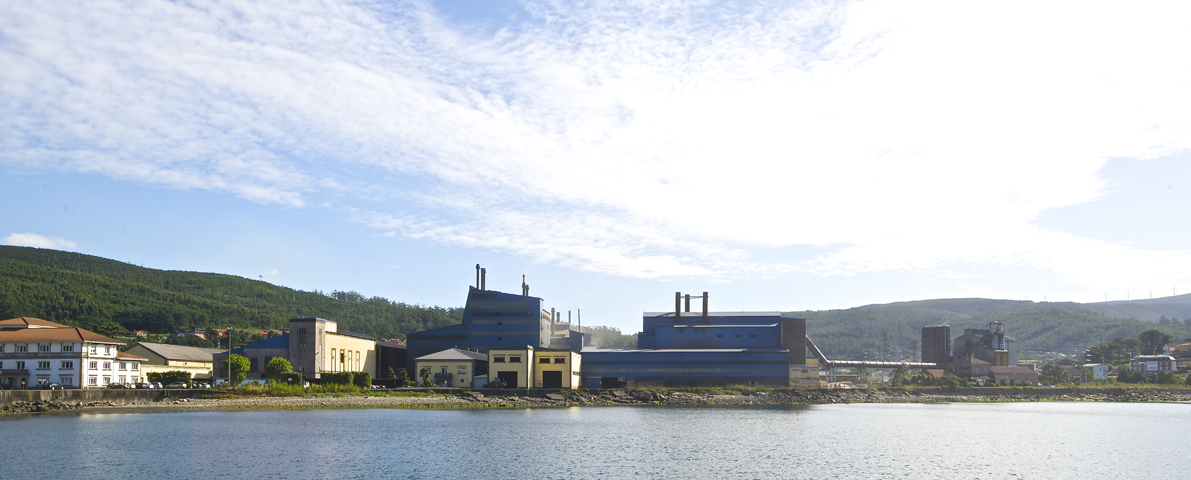History
For more than a century, A Costa da Morte has been a reference both in the ferroalloy business and in the capacity to generate hydroelectric power.
The history of the assets dates back to the beginning of the 20th century:
1903
Salto del Pindo Concession
1904
"Carburos Metálicos" starts up the first calcium carbide furnace at the Cee plant.
1922
The ferroalloy period begins at the plant with the production of Ferromanganese.
1925
Ferrosilicon production begins in Cee
1931
Silicomanganese manufacturing begins in Cee
1956
Castrelo's first hydroelectric power plant starts operating
1959
The expropriation procedures for the Fervenza Reservoir are initiated
1960
The construction of the Carantoña waterfall is completed.
1966
Completion of the Ponte Olveira Waterfall
1967
Fervenza Reservoir begins to be exploited
1971
Fervenza I power plant is started up
1977-1978
The factory in Dumbría started its activity and production
1988
The new Santa Eugenia hydroelectric power plant (reservoir and power plant) is started up.
1992
"Grupo Ferroatlántica acquires from Carburos Metálicos the hydroelectric power plants and factories in Cee and Dumbría.
2004
Novo Pindo hydroelectric power plant starts operation
2015
The Company becomes part of Ferroglobe, which is the result of the merger of Grupo Ferroatlántica and Globe Specialty Metals.
2018
Fervenza II, Ponte Olveira II and Novo Castrelo power plants are started up
2019
In August 2019 Kehlen Industries Management, S.L.U., acquires Ferroatlántica.
Kehlen Industries Management, S.L.U. is a limited liability company wholly owned by Sixth Street Partners (www.sixthstreet.com) and managed by Ithaka (www.ithaka.es).
2020
In February 2020 change of image and name to Xallas Electricidad y Aleaciones, S.A.U. (Xeal).
2023
In October 2023 Xeal is sold to the Czech Energo-Pro, a.s. group.
History of Ferroalloys
In 1904 the first calcium carbide furnace was started up at the Cee factory. Calcium carbide is used to produce acetylene gas, which is used for public lighting.
In 1922 the Ferroalloys period began with the production of Ferromanganese in the Cee factory. In 1925 the production of Ferrosilicon began in Cee and in 1931 the production of Silicomanganese.
Over the years, the activity was consolidated and prospered and at the end of the 70's, between 1977 and 1978, the Dumbría factory for the manufacture of Ferrosilicon was started up.
In 1992 Ferroatlántica, S.L. was incorporated and acquired the ferroalloy and energy assets from Carburos Metálicos.
The ferroalloys division was consolidated as a world leader, first under the name of Carburos Metálicos and later as FerroAtlántica, which was incorporated as Grupo FerroAtlántica in 2007.
In 2015, the company was renamed Ferroglobe, following the merger between FerroAtlántica and Globe Specially Metals.
History of Hydroelectric Power Plants
It began in 1903 when the "Sociedad Hidroeléctrica del Pindo, S.A." was constituted for the exploitation of the Salto del Pinto, although it can be said that the beginning of the current XEAL dates back to 1956, when Carburos Metálicos started up the first group of the hydroelectric exploitation of Castrelo.
During the period between 1960 and 1971, Carantoña, the Fervenza dam and the Fervenza I hydroelectric power plant, as well as Ponte Olveira I, were put into operation.
In 1988 the new Santa Eugenia hydroelectric power plant, reservoir and power plant were commissioned, and in 2004 Novo Pindo.
And in 2018, the Novo Castrelo, Fervenza II and Ponte Olveira II power plants will be commissioned.

In February 2020, the company was renamed Xallas Electricidad y Aleaciones, XEAL, a new name and a new brand that have been a milestone to consolidate a project with a great future.
In October 2023 it is sold to the Energo-Pro, a.s. group.
